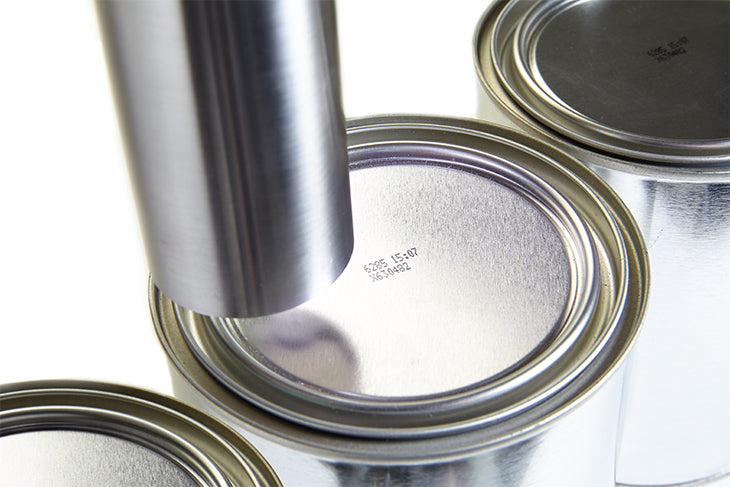White Paper: The Benefits of Continuous Inkjet (CIJ) Printing for Industrial Applications

The Benefits of Continuous Inkjet (CIJ) Printing for Industrial Applications
Introduction
In today’s industrial landscape, accurate and reliable product marking and coding are critical. Industries such as food and beverage, pharmaceuticals, automotive, and electronics require high-speed, precise, and durable printing solutions to meet regulatory compliance, traceability needs, and branding objectives. Continuous Inkjet (CIJ) printing has emerged as a preferred technology for these demanding applications.
This white paper explores the advantages of CIJ printing, why it stands out among other printing technologies, and how it can enhance productivity, cost-efficiency, and quality in industrial environments.
1. What is Continuous Inkjet Printing?
Continuous Inkjet (CIJ) printing is a non-contact printing method that uses a continuous flow of ink droplets to mark products and packaging. In CIJ printers, ink is expelled through a nozzle and broken into droplets using a high-frequency vibration process. Charged ink droplets are then deflected by an electrostatic field to form text, graphics, or barcodes on the target surface.
CIJ technology is widely used in industrial applications due to its ability to print on a variety of surfaces, including metal, plastic, glass, paper, and wood, at high speeds.
2. Advantages of CIJ Printing for Industrial Applications
A. Versatile Substrate Compatibility
CIJ printers excel in printing on diverse materials, including:
-
Porous surfaces (e.g., cardboard, paper).
-
Non-porous surfaces (e.g., plastic, glass, metals).
-
Irregular or curved surfaces (e.g., bottles, pipes, cables).
This versatility makes CIJ an ideal solution for industries with a wide range of product packaging requirements, such as beverages in glass bottles or food products in flexible pouches.
B. High-Speed Printing
CIJ printers are designed for high-speed production lines, capable of marking products at speeds of over 1,000 feet per minute. This is particularly valuable in industries such as:
-
Food and Beverage: Marking expiration dates, batch codes, and barcodes on fast-moving production lines.
-
Pharmaceuticals: Printing legible codes and serial numbers on individual pills or small packaging.
The ability to maintain clear, legible prints at such speeds ensures minimal disruption to production and high throughput.
C. Non-Contact Printing
CIJ technology is a non-contact method, allowing printing on delicate or uneven surfaces without risk of damage. For instance:
-
Electronics: Printing on sensitive circuit boards or microchips.
-
Medical Devices: Coding on sterile, irregularly shaped instruments or packaging.
Non-contact printing also eliminates concerns about substrate movement, ensuring precision even in challenging production environments.
D. Continuous Operation
CIJ printers are designed for 24/7 operation, making them a reliable solution for industries with continuous production demands. Features like automatic cleaning cycles ensure minimal downtime and consistent performance.
E. Small Character Printing
CIJ technology excels in printing small, detailed text or graphics, which is crucial for:
-
Pharmaceuticals: Regulatory requirements for tiny, legible batch codes or serial numbers.
-
Electronics: Printing part numbers or specifications on small components.
The precision of CIJ printers ensures that even the smallest characters are legible and durable.
F. Durable and Fast-Drying Inks
CIJ printers use specialized inks that dry quickly and adhere securely to various surfaces. Benefits include:
-
Durability: Resistant to smudging, abrasion, and environmental factors such as moisture or heat.
-
Variety: Availability of different ink formulations, including UV-visible, heat-resistant, and food-grade inks.
-
Environmental Adaptability: Ideal for challenging environments like high-humidity food processing plants or high-temperature automotive assembly lines.
G. Low Operating Costs
CIJ printing offers competitive cost advantages, including:
-
Minimal Maintenance: Automated cleaning systems reduce manual intervention and associated costs.
-
Efficient Ink Usage: CIJ systems optimize ink consumption, minimizing waste and lowering operational expenses.
-
Scalability: CIJ printers can adapt to different production speeds and volumes, eliminating the need for costly upgrades.
H. Compliance with Regulatory Standards
In industries like food, beverage, and pharmaceuticals, regulatory compliance is paramount. CIJ printing ensures clear, consistent coding for:
-
Traceability: Printing batch numbers, lot codes, and manufacturing dates.
-
Safety Compliance: Adding allergen information or expiration dates to packaging.
-
Global Standards: Meeting guidelines such as GS1 barcoding or FDA and EU labeling regulations.
3. Industry Applications of CIJ Printing
A. Food and Beverage
CIJ printers are widely used to mark expiration dates, batch numbers, and barcodes on food packaging and beverage containers. Their ability to print on curved and irregular surfaces, such as cans and bottles, makes them indispensable in this sector.
B. Pharmaceuticals and Medical Devices
CIJ printing ensures compliance with stringent labeling regulations by producing precise, durable codes on small and irregular surfaces.
C. Automotive and Aerospace
CIJ printers can mark durable codes on metal parts and components, such as engine blocks or aircraft components, ensuring traceability in demanding environments.
D. Electronics
In the electronics industry, CIJ printers provide precise, small-character printing for circuit boards, connectors, and microchips.
E. Consumer Goods
CIJ printing is used to add branding, product details, or traceability information on a variety of consumer goods, including cosmetics, personal care products, and household items.
4. CIJ Printing vs. Other Technologies
While other printing technologies like Thermal Inkjet (TIJ) and Laser Marking have their place, CIJ printing stands out in specific areas:
|
Feature |
CIJ Printing |
TIJ Printing |
Laser Marking |
|
Substrate Compatibility |
Broad (porous, non-porous, curved) |
Limited to porous surfaces |
Very limited |
|
Printing Speed |
High |
Medium |
Medium |
|
Cost-Effectiveness |
Affordable for high volumes |
Costly for high volumes |
Expensive upfront cost |
|
Maintenance |
Moderate |
Low |
Low |
|
Durability |
High (with durable inks) |
Medium |
Permanent |
CIJ technology remains the go-to solution for industries requiring versatility, speed, and durability.
5. Challenges of CIJ Printing
While CIJ printing offers numerous benefits, it does come with certain challenges, including:
-
Initial Investment: Higher upfront costs compared to some other printing methods.
-
Ink Management: Requires proper storage and handling of ink and solvents.
-
Maintenance: While relatively low, routine cleaning and upkeep are essential for optimal performance.
Despite these challenges, the benefits of CIJ printing far outweigh its limitations for most industrial applications.
Conclusion
Continuous Inkjet (CIJ) printing is a proven, versatile solution for industrial applications. From its ability to handle diverse substrates and high-speed operations to its durability and compliance capabilities, CIJ technology provides unmatched value to manufacturers across various sectors.
For businesses seeking a reliable, cost-effective, and high-performance coding and marking solution, CIJ printing is an investment that delivers consistent results.
To explore how CIJ printing can benefit your business, or to learn more about leading CIJ brands like LEIBINGER and Squid Ink, visit USinks.com today.

